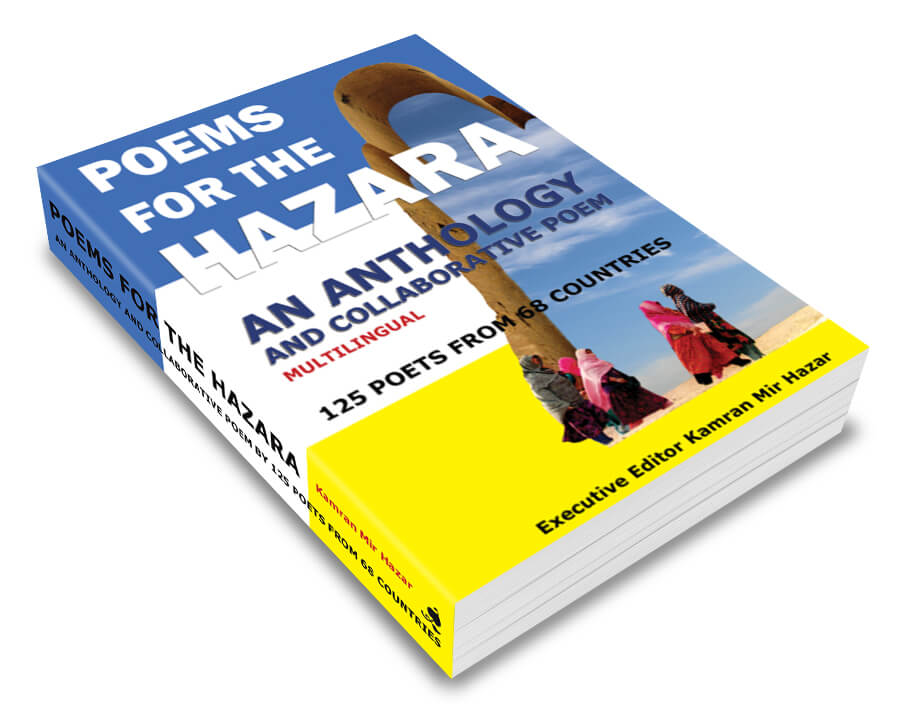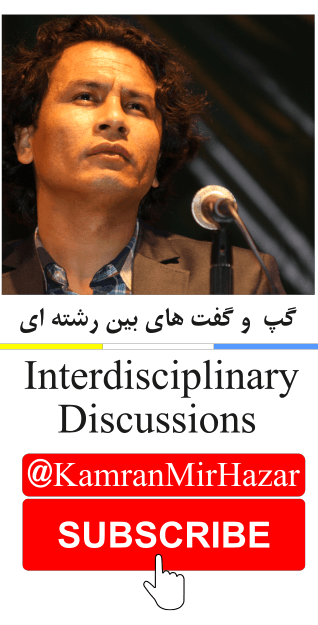
“Winter in Kabul: Life Without Peace in Afghanistan” by Ann Jones
A Kabulpress.org book review
Reading time: (Number of words: )
This sobering, compelling work should be required reading on how NOT to “win a war on terrorism.” I have read over a dozen books on modern Afghanistan, and this is the best. It is passionate, brave, clear, witty, and well-informed with many documented examples, about what is happening in Afghanistan today.
Author, Ann Jones is an ardent American feminist with a PhD in Literature and background in ESL who entered Kabul right after the bombing stopped in 2002. She stayed on and off for nearly three years. Jones offers stark, painful criticism of Afghan culture and specifically those charged to improve it. Men, women, boys, girls, educators, government workers, military, and aid workers receive harsh tongue-lashings in their turn, from an astute eyewitness to the failures of pre and post Taliban Afghanistan.

Jones unwraps the open sores of Afghan culture that must be addressed to create a just society. She paints a clear portrait of the development of the violent religious culture born in 1950s Egypt that met its apex in a remote Afghan valley where Osama bin Laden and his minions planned their painful push backs against the West—to the utter shame of most Afghans.
As Jones reflects on six years of the West’s occupation of Afghanistan, she sees failure after failure, which explains the current deepening troubles in governance, infrastructure, health, education, economic opportunity, and security. Western troops were met by joyful Afghans after the rout of the Taliban, as people pulled out their cassette players, shaved their beards, plugged in their TVs, read their newspapers, shed their burquas, and walked the streets without fear of being beaten by the Talibs.
But as the years slid by, even basic improvements have been left unaccomplished. Desperate situations have actually become worse in many cases. And the disappointment of Afghans who suffered on behalf of the West during their Western-funded rebellion against the Soviet Union, is palpable.

Among the disappointments are often callous occupying troops and mercenaries, a disconnected and ill-informed international diplomatic corps, and untold millions in foreign aid that benefitted mainly non-Afghan consultants and contractors who delivered shoddy work, incomplete projects, or nothing at all for their bloated payments.
Promises to the Afghans are repeatedly broken. The national government, with the consent of the occupation, installed many of the very warlords who had shelled Kabul for years, and had welcomed Osama bin Laden as an inspired guest. A culture of bribery has set in. Police and courts are bought by the highest bidder. There is little electricity, clean water, or sewerage. In the rural areas, people starved during the winter, and were forced to grow poppies for the Western-backed drug syndicate in order to feed their children.
Jones is livid that Afghan women, by far, have had it the worst, suffering for centuries in a moribund patriarchal culture, from relentless discrimination that regarded them as the lowest form of slaves. For Jones, before Afghanistan can realize any real progress, the status of women must be drastically improved.

She makes a convincing argument, cataloging forced marriages of adolescent girls to much older men, women being used as bartered objects, women having no legal rights, and a culture that scapegoats women for most of its ills. Women have woefully few educational opportunities and miniscule health care. Women prisoners subsist in filthy cells, accused of sex crimes committed by men who go free. As the fundamentalists reinforce their hold on power, women are being forced to cover up again with burkas so they can’t inspire Afghanistan’s holy men to commit sinful acts. The result of all this is an appalling female suicide rate, a squandering of half of the nation’s intellectual capital, and a level of human misery that fouls the entire culture.
Personally, I had many different experiences in Kabul with Afghans who came out of 25 years of war and/or refugee camps with hope, a good work ethic, a commitment to fairness, and a healthy resolve to push back against the totalitarians, the criminals, and the opportunists lining their pockets with aid money. I worked in an office with nearly 50% women, none of whom wore a burka, ever. They were outspoken, educated, and progressive, and wanted to stay in Aghanistan . I met many men who were vigorously opposed to female oppression, and pushed the envelope of social progress to the point that their lives were threatened. They were hungry to learn, gracious, and unhindered by the decades of unspeakable violence. They earned my utmost respect. It could have all been an illusion, but I don’t think so.
Nevertheless the strong medicine of “Kabul in Winter” reveals important truths and obligatory insights to anyone with a real interest in the uphill battle Afghanistan faces.
For Americans, and other nations trying to support Afghanistan, “Kabul in Winter,” provides enough fuel to make your blood boil about how the federal government, sleazy businesses, and even respected U.S. organizations and institutions have bungled projects, squandered good will, and misspent billions of American tax dollars meant to improve the situation in Afghanistan—but simply disappeared.

You can buy "Kabul in Winter" from our home page, and a portion of the purchase price will be returned to us to support our work.

Poems for the Hazara
The Anthology of 125 Internationally Recognized Poets From 68 Countries Dedicated to the Hazara
Order Now










Forum posts
1 August 2008, 17:35, by Francesco Sinibaldi
A flash of
light falls in the
bedroom with
an evident strength,
and I search, in
my childhood, the
sound of a blackbird,
a beautiful noise
and the love for
a dream.
Francesco Sinibaldi
9 August 2008, 17:24, by Francesco Sinibaldi
A circle of life
is the natural field
of a country, in
a luminous care
now forgetting an
answer; and this
is my dreamland,
the sound of a
blackbird and an
ancient desire.
Francesco Sinibaldi
View online : A clammy blackbird.
23 August 2008, 17:08
The long vigils
of the night fall
on the ground
with a fine
sensibility, and
even that sunshine
invites me to cry
near the sound
of a finger: I dream
you my dear,
I remember your
fate.
Francesco Sinibaldi
6 September 2008, 17:11
The strong
sands of an open
sea give an
illusion to that
beautiful sunset,
while a gentle
delight reappears,
suddenly, where
a glimmer outshines....
Francesco Sinibaldi
View online : http://forums.canadiancontent....
20 September 2008, 16:53, by Francesco Sinibaldi
When everything
shines in the
light of October
there’s a beautiful
seaside, and a
careful watcher: the
sun fades away,
and even a
strange man
arrives near a
fountain.
Francesco Sinibaldi
http://forum.china.org.cn/view...
4 October 2008, 17:04
The spring water
gives me a
particular feeling,
the purple appearance
in the heart of a
beautiful landscape;
and always outshines,
like a dream in
the breath of
a sadness.
Francesco Sinibaldi
18 October 2008, 16:44
I love to
walk in the
garden with
a lot of portraits,
recalling a blackbird
and always
describing a little
emotion.
Francesco Sinibaldi
View online : http://www.foreignpolicy.com/r...
1 November 2008, 17:53
In the heaven,
near a beautiful
clapping, I
hear a voice:
a spirit appears
in the shade
of a Chapel
and everything
shines on the
side of your
darkness.
Francesco Sinibaldi
View online : http://pub30.bravenet.com/gues...
15 November 2008, 16:45
In the springtime,
near an hedge
full of intentions,
I see the blackbird
of a youthful
day: over a bridge,
near a delicate
sadness, with
all my heart......
Francesco Sinibaldi
29 November 2008, 16:33
The stranger
arrives with a
present agility,
and so my
desire appears
near a delicate
border, the side
of my life that
discovers a dream.
Francesco Sinibaldi
View online : http://www.dailystar.co.uk/for...
13 December 2008, 16:38
At pleasure
I describe the
perpetual sound
of a melody,
the cold water
of a golden
fountain and the
song of a
martin, in the
heart of a
delicate thought.
Francesco Sinibaldi
View online : http://www.dailystar.com.lb/fo...
27 December 2008, 16:11
Shining lights
and the plan
of a destiny,
when Christmas
arrives: I see
the profile of
a northerly wind
near the sound
of a feast, a
rosy return
and always a
white dream
on a similar sight.
Francesco Sinibaldi
10 January 2009, 16:17
An alley
brings me in
the sound
of a waterfall,
with a white
water recalling
the purpose
and the flight
of a swallow.
Francesco Sinibaldi
24 January 2009, 16:17
When a candle
appears in the
light of a
fine day, I listen
to you, my
delicate rosette;
your tender
behaviour presents
an intention, and
the sound of a
season returns in
my heart....
Francesco Sinibaldi
http://forum.afrik.com/index.p...
7 February 2009, 16:04
Here, in
an highest season
full of my care,
I’d like to discover
the sound of
a tin, and perhaps
my desire could
arrive in the
springtime.
Francesco Sinibaldi
24 January 2009, 22:12
Is this is a kind a poem party here . well I am really out . cause : the above pictures give me a different feeling then what ever force you to start saying or writhing poem in regard of Afghanistan poverty case . look like this an American way of feeling . other ways war and poverty have different dictionary . zakhmi.
20 February 2009, 07:57, by dhcrystal
Ann Jones is dead on in her assessment of the Afghan plight! Every politician and government employee in Washington should be forced to read this book, then to look in the mirror for a reflection into what their part in this bungled catastrophe has been.
As an American who was born in and grew up in Pakistan and Afghanistan I was surprised at the truth someone finally wrote about that land... How she managed to uncover the heart of the failures there so quickly is surprising. But, the West’s continued failure, bungling and outright corruption and ongoing self-serving pagentry is not in the least bit surprising.
The only thing I truly felt at the conclusion of my reading was unfathomable disgust for the way we in the West continue to try to fix such failed lands.
21 February 2009, 16:09
An inner
serenity tries
to forget the
sparkling intention
of a beautiful
noise, with
a light in your
heart and a
youthful day
of a loving
behaviour....
Francesco Sinibaldi
http://neighbors.denverpost.co...
7 March 2009, 15:58
Under the
sun of a cold
winter the
greatest emotion
becomes a
noble seaside,
with the
care of my
life near a
delicate mirth.
Francesco Sinibaldi
http://pub41.bravenet.com/gues...
21 March 2009, 17:13
Once upon
a time there
was a children
and a loving
desire with a
luminous voice;
but now my
romance appears
in your mind
like a sensible
care.....
Francesco Sinibaldi
4 April 2009, 16:12
Timid
behaviour, recalling
the sunshine of
a positive sign
that now fades
away, discover
the sadness
in a beautiful
care....
Francesco Sinibaldi
http://forums.lavoix.com/index...
18 April 2009, 14:42
Like a green
pearl in the
centre of
an open space
I see beautiful
skies and a
weeping of
love.
Francesco Sinibaldi
http://forum.lixium.fr/v-1853016947.htm
2 May 2009, 14:39
And now
this colour
appears in a
rainbow like
a delicate
bird: I’m going
to believe
that everything
shines when
a light fades
away....
Francesco Sinibaldi
16 May 2009, 14:37, by Francesco Sinibaldi
The soft and
gentle melody
of a sunshine appears
in the calm of
a delicate reason,
that mellow aperture
recalling, when
the down-pour
arrives, a tracing
present.
Francesco Sinibaldi
http://www.cosmopolitan.com/co...
30 May 2009, 14:34
I like to
discover that
bashful behaviour,
and always
my mind appears
in the light
with a luminous
lantern now
recalling a spell.
Francesco Sinibaldi
http://forum.milfordmercury.co...
13 June 2009, 14:36
I’ve gone
near the sound
of an open
aspect waiting
for a blackbird,
and now,
while the north
wind appears
with a delicate
care, I follow
the sun....
Francesco Sinibaldi